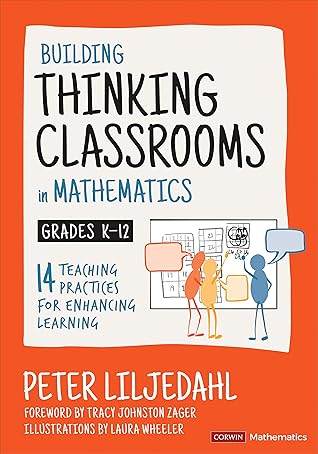More on this book
Community
Kindle Notes & Highlights
Read between
August 10 - August 21, 2024
Thinking is a necessary precursor to learning, and if students are not thinking, they are not learning.
If we want our students to think, we need to give them something to think about—something
a task needs to do is to get students to think.
Good problem-solving tasks require students to get stuck and then to think, to
experiment, to try and to fail, and to apply their knowledge in novel ways in order to get unstuck.
Good problem-solving tasks require students to get stuck and then to think, to experiment, to try and to fail, and to apply their knowledge in novel ways in order to get unstuck.
Primary: How many squares are in the image below?
Mimicking is bad because it displaces thinking.
Proximity questions are the questions students ask when the teacher is close by—in proximity.
Keep-thinking questions, on the other hand, are asked by students so they can continue to engage with the task at hand.
10 things to say in response to a proximity or stop-thinking question. Isn’t that interesting? Can you find something else?
Can you show me how you did that? Is that always true? Why do you think that is? Are you sure? Does that make sense? Why don’t you try something else? Why don’t you try another one? Are you asking me or telling me?
Grades K–4: Ice Cream Cones The Ice Dream ice cream shop has 10 flavors of ice cream. How many different two-scoop ice cream cones can you make? What if there were 11 flavors? What if there were 12 flavors? What if it were
20 flavors? What if each cone had at most three scoops?
The idea of preparing our students for what is to come is so engrained in the fabric of teaching that, even when we know it is counterproductive to thinking, it is difficult to stop.
the task is not given until the groundwork is established, the laying of the groundwork does not diminish the thinking required,
Giving tasks verbally produced more thinking—sooner and deeper—and generated fewer questions at every grade level, in every context, and even in classes with high populations of English language learners.
Obviously, hints that increase ability are better in the long run.
doing, justifying, explaining, teaching, creating—not
A farmer has some chickens and some pigs. One day they notice that their animals have a total of 22 legs. How many chickens and how many pigs might they have? Can you come up with another solution? And another? Can you come up with all the solutions? How do you know that you have all the solutions?


